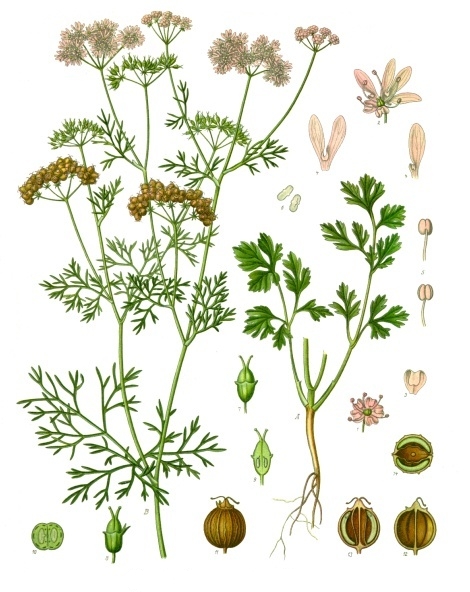An herb from the fresh leaves of the coriander plant. In the family of Apiaceae.
Cilantro has delicate, lacy green leaves, resembling flat leaf parsley. It has a
pungent, complex, citrusy flavor. Cilantro is a good choice for a butterfly garden, as the plant is a
butterfly favorite, especially during the morning and evening. Cilantro is an annual plant, meaning it
doesn’t “come back” from the same seeds every year. But it does re-seed itself if you let it, which
makes your job as a gardener a lot easier! Just wait for it to flower and let it drop the seeds to the
ground. Leave those seeds alone and they’ll grow into new plants for you next year. This only works
if you have a dedicated bed for your cilantro (or if you’re growing it indoors in a container). If you’re
growing your cilantro in a larger garden alongside other herbs and vegetables, it’s probably better to
seed it yourself each year.






